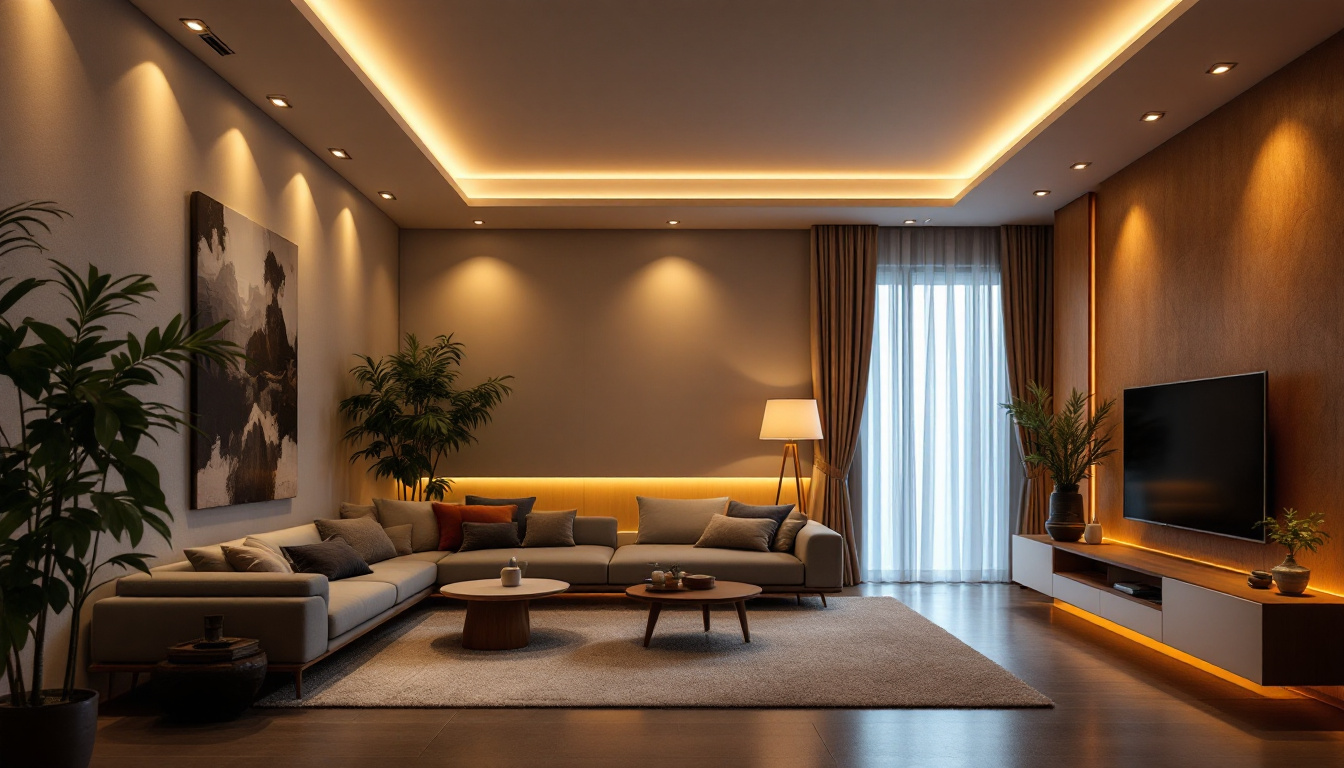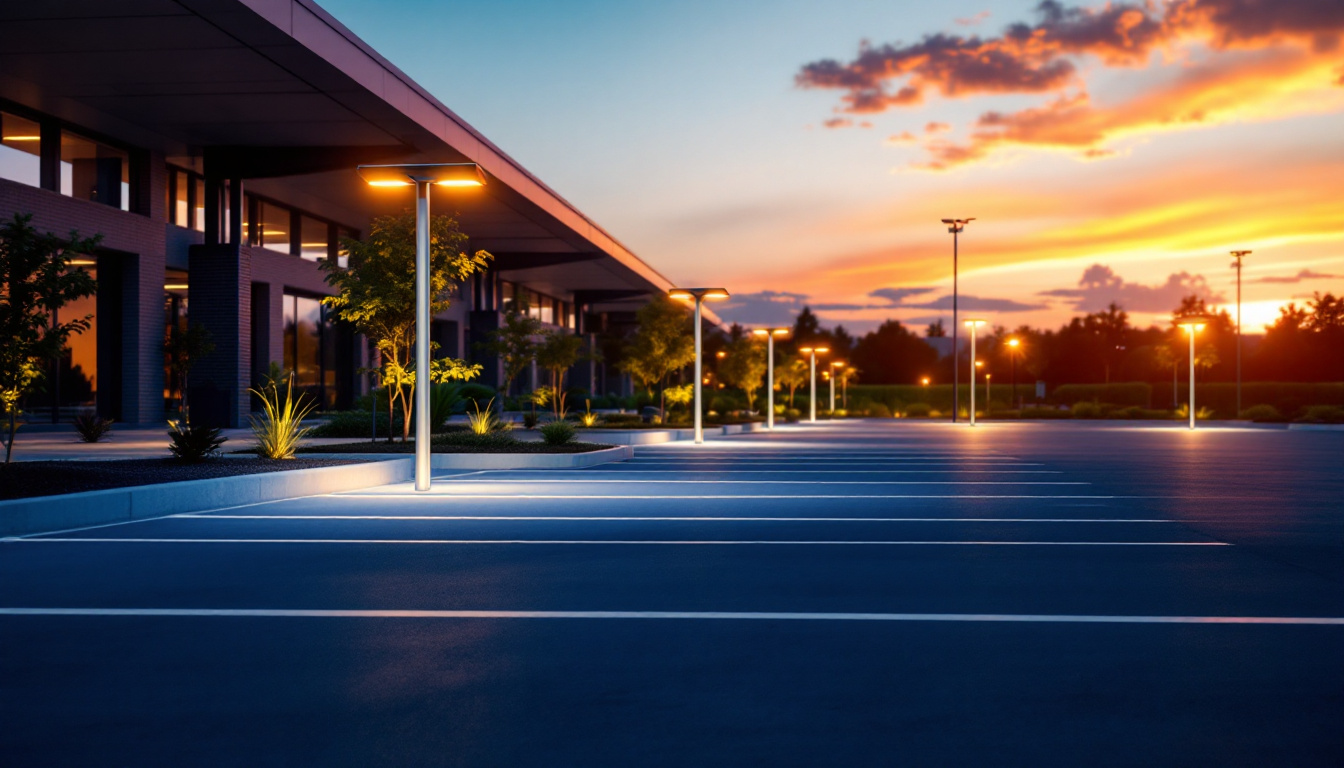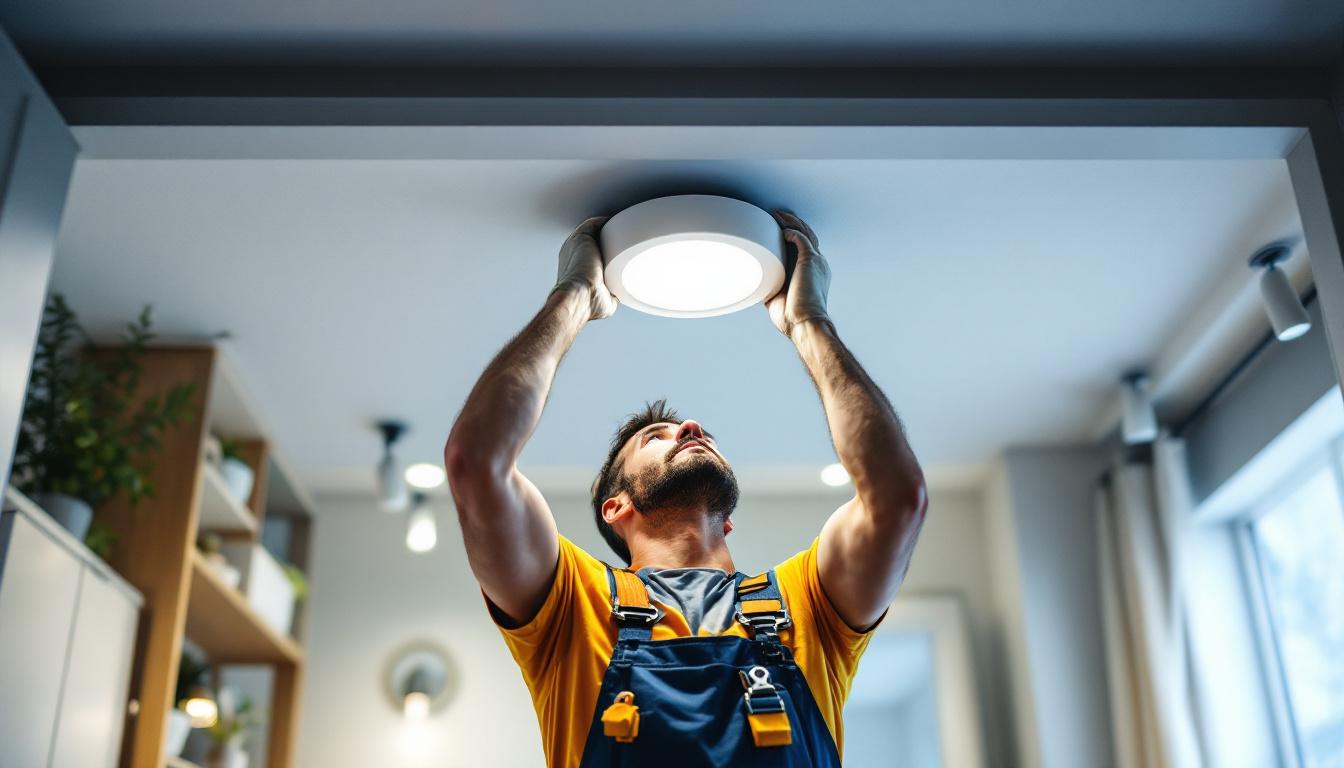
Recessed lighting has become a staple in modern interior design, offering a sleek, unobtrusive way to illuminate spaces. For lighting contractors, understanding the nuances of recessed lights is essential for delivering quality installations that meet client expectations. This article delves into the various aspects of recessed lighting that every contractor should be well-versed in, from types and installation techniques to design considerations and energy efficiency.
Recessed lighting, often referred to as can lights or pot lights, is a type of light fixture that is installed into a hollow opening in the ceiling. This design allows the light to shine down while remaining flush with the ceiling, creating a clean and modern aesthetic. As a contractor, it’s crucial to understand the different components and types of recessed lights available in the market.
Recessed lights consist of several key components: the housing, trim, and bulb. The housing is the part that is installed in the ceiling and can vary in size and shape depending on the application. The trim is the visible part of the fixture that can come in various styles, including baffle, reflector, and adjustable trims. Lastly, the bulb type can significantly affect the light output and energy consumption. For instance, LED bulbs are becoming increasingly popular due to their longevity and energy efficiency, often lasting up to 25,000 hours compared to traditional incandescent bulbs. This shift not only reduces the frequency of replacements but also contributes to lower energy bills, making recessed lighting a more sustainable option for homeowners.
There are several types of recessed lights, each designed for different applications. For instance, new construction housings are designed for installation in new builds, while remodel housings are ideal for retrofitting existing spaces. Additionally, there are also IC-rated housings that can be installed in insulated ceilings, ensuring safety and compliance with building codes. Beyond these basic categories, there are also specialized fixtures such as adjustable recessed lights, which allow for directional lighting, making them perfect for highlighting artwork or architectural features in a room. Furthermore, some recessed lights come with integrated smart technology, allowing users to control brightness and color temperature via mobile apps or voice commands, adding an extra layer of convenience and customization to modern lighting solutions.
Proper installation is critical to the performance and longevity of recessed lighting. As a contractor, mastering the installation techniques will not only ensure a quality finish but also enhance client satisfaction.
Before installation, careful planning of the layout is essential. Consider the room’s purpose, the height of the ceiling, and the desired light output. A general rule of thumb is to space recessed lights about 4 to 6 feet apart, depending on the wattage of the bulbs used. This spacing helps to avoid dark spots and ensures an even distribution of light. Additionally, it is beneficial to take into account the color and texture of the walls and furnishings, as these can significantly affect how light is reflected in the space. For instance, lighter colors will bounce light more effectively, potentially allowing for fewer fixtures to achieve the desired illumination.
When installing recessed lights, electrical considerations are paramount. Ensure that the circuit can handle the load of the new fixtures, and always adhere to local electrical codes. Using LED bulbs can help reduce energy consumption and heat output, making them a popular choice for recessed lighting. Furthermore, it’s wise to incorporate dimmer switches into the design, as they not only enhance the ambiance of a room but also provide energy savings by allowing users to adjust the light levels according to their needs. This flexibility can be particularly appealing in multi-functional spaces where lighting requirements may change throughout the day.
Different ceiling types can present unique challenges during installation. For example, installing recessed lights in a vaulted ceiling may require specialized housings and mounting techniques. Additionally, contractors should be prepared to address any structural elements that may interfere with the installation, such as beams or ductwork. In cases of drop ceilings, careful consideration must be given to the placement of the fixtures to ensure they align properly with the grid system. Moreover, soundproofing materials or insulation can also complicate the process, as they may require additional adjustments to ensure that the lights are securely mounted and function effectively without compromising the room’s acoustics.
Recessed lighting is not just about functionality; it also plays a significant role in the overall design of a space. Understanding how to effectively integrate recessed lights into a room’s design can elevate the aesthetic appeal and enhance the user experience. The strategic placement of these fixtures can transform a room, highlighting architectural features and creating focal points that draw the eye. Additionally, the use of dimmers can provide flexibility, allowing homeowners to adjust the mood and ambiance according to their needs, whether it’s for a cozy evening or a lively gathering.
Effective lighting design often involves layering different types of lighting—ambient, task, and accent. Recessed lights can serve as a source of ambient light, providing a general illumination that can be complemented by other fixtures such as pendant lights or wall sconces. This layered approach creates a more dynamic and inviting atmosphere. Furthermore, incorporating smart lighting technology can enhance this layering by allowing users to control the intensity and color temperature of their recessed lights, enabling a seamless transition from day to night. This adaptability not only improves functionality but also enhances the overall aesthetic by allowing for personalized lighting schemes that reflect the homeowner’s style.
The trim of a recessed light can significantly impact the style and function of the fixture. For instance, baffle trims reduce glare and are ideal for spaces where comfort is a priority, while reflector trims can enhance brightness and are suitable for task-oriented areas. Contractors should work closely with clients to choose trims that align with their design vision. Additionally, there are decorative trims available that can add a touch of elegance or a modern flair to the design. Options such as decorative rings or colored trims can serve as a subtle accent, allowing the recessed lights to blend seamlessly with the decor or stand out as a statement piece. This attention to detail in trim selection not only enhances the functionality of the lighting but also contributes to the overall aesthetic coherence of the space.
As energy efficiency becomes increasingly important, recessed lighting offers several options that can help contractors meet sustainability goals. Understanding these options is essential for providing clients with eco-friendly solutions. The shift towards energy-efficient lighting not only contributes to lower utility bills for homeowners but also plays a crucial role in reducing the overall carbon footprint of residential and commercial buildings. By choosing energy-efficient fixtures, contractors can help clients embrace a more sustainable lifestyle while also adhering to increasingly stringent building codes and regulations.
LED bulbs are rapidly becoming the preferred choice for recessed lighting due to their energy efficiency and longevity. Unlike traditional incandescent bulbs, which consume more energy and have a shorter lifespan, LED bulbs can last up to 25,000 hours and use significantly less power. Educating clients about the benefits of LED technology can help them make informed decisions. Furthermore, LED bulbs emit less heat, which not only enhances safety but also reduces the workload on cooling systems in warmer months, leading to additional energy savings. The variety of color temperatures available in LED options also allows homeowners to create the perfect ambiance in any space, from warm and cozy to bright and invigorating.
Integrating smart technology into recessed lighting systems can further enhance energy efficiency. Smart bulbs and controls allow users to adjust brightness levels and set schedules, reducing energy consumption when lights are not needed. As a contractor, staying informed about the latest smart lighting solutions will enable you to offer clients cutting-edge options. Additionally, many smart lighting systems can be integrated with home automation platforms, allowing users to control their lighting remotely via smartphone apps or voice commands. This level of convenience not only promotes energy savings but also enhances the overall user experience, making homes more adaptable to the needs of their occupants. With the rise of IoT (Internet of Things) technology, the potential for innovative lighting solutions continues to expand, paving the way for even more sustainable practices in the future.
Even experienced contractors can make mistakes during the installation of recessed lighting. Being aware of common pitfalls can help ensure a smooth process and a successful outcome.
One of the most common mistakes is overcrowding fixtures, which can lead to excessive brightness and an uninviting atmosphere. It’s essential to strike a balance between providing adequate light and maintaining a comfortable environment. Taking the time to plan the layout thoughtfully can prevent this issue.
Ceiling height plays a critical role in determining the appropriate type and placement of recessed lights. Installing fixtures too close to the ceiling can create a harsh lighting effect, while placing them too low can lead to an uneven distribution of light. Always consider the height of the ceiling and adjust the installation accordingly.
Recessed lighting offers a versatile and stylish solution for illuminating spaces, making it a valuable addition to any contractor’s repertoire. By understanding the various components, installation techniques, design considerations, and energy-efficient options, lighting contractors can provide exceptional service and meet the diverse needs of their clients.
As the demand for recessed lighting continues to grow, staying informed about the latest trends and technologies will help contractors remain competitive in the industry. Embrace the art and science of recessed lighting, and watch as your projects shine with brilliance and sophistication.
Ready to elevate your lighting installations with the sleek appeal of recessed lighting? Look no further than LumenWholesale for all your lighting needs. We provide contractors with top-quality, spec-grade lighting products at unbeatable wholesale prices, ensuring your projects shine with reliability and performance. Say goodbye to inflated markups and hello to our extensive selection that meets the highest industry standards. Plus, with free shipping on bulk orders, you can stock up on premium lighting at the best value — without hidden fees or compromises. Don’t miss out on the perfect blend of quality, affordability, and convenience. Visit LumenWholesale today and discover Wholesale Lighting at the Best Value for your next project.

Discover the benefits and features of solar parking lot lights in this comprehensive guide.

Discover the top strategies lighting contractors use to ensure safe and efficient installation of washer electrical plugs.

Discover essential insights for lighting contractors on replacing recessed light fixtures.

Discover essential insights and expert advice from lighting contractors on maximizing the efficiency and aesthetics of Mhl lamps.